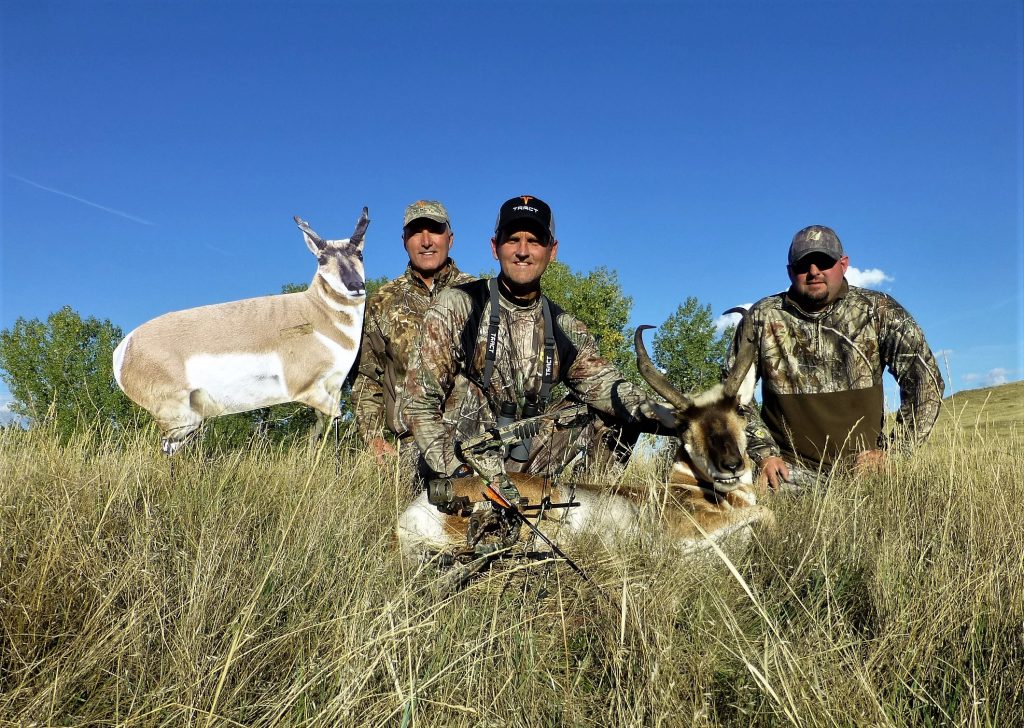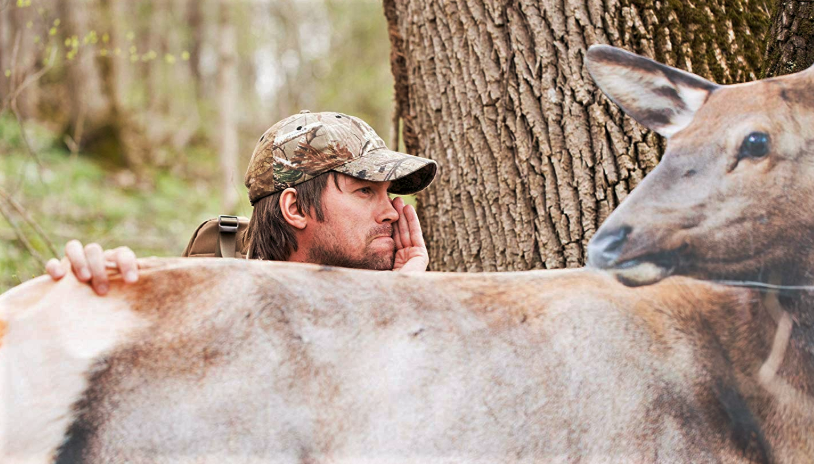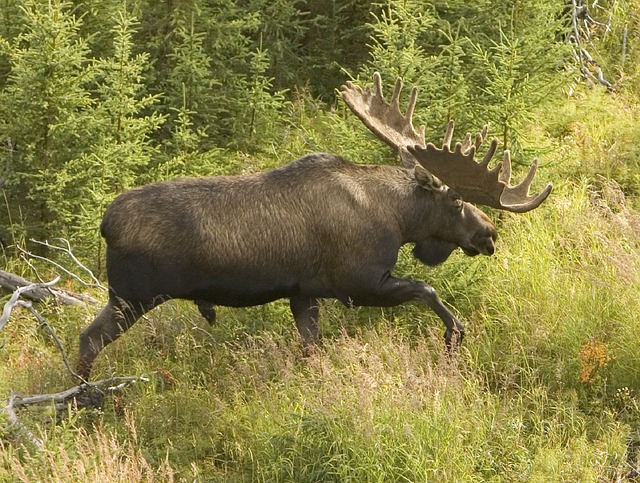Spot and Stalk Situations You May Encounter This Season
Spot and Stalk Situations You May Encounter This Season. This coming fall and winter, as hunters converge upon the landscape in pursuit of wild game, we will be faced with a range of spot and stalk situations that are likely to take place. These are the hunts that wake us up hours before the alarm and fuel our will to brave the cold for yet another day. Or perhaps, in the case of the antelope, it’s the heat. Chasing wapiti might mean soldiering on despite a sore body from humping up and down mountains day in and day out. It’s a planes, trains and automobiles adventure to even get to a moose’s territory. Mature whitetail bucks only let down their guard, however slightly, in the dead of winter when the sun may not shine for days as they chase every available female.
The following are instances and challenges we hope hunters are able to accept and conquer. Of course, failure is the quickest path to experience...
ANTELOPE
Antelope are just fun to hunt. Out on the plains of the west where they roam, antelope can see for miles and run for days. In the early season, during the short, two-week rut, bucks are dogging does day and night, building a harem they’ll tend to near exhaustion.
The Scene
You’ve booked a week-long bow hunt in Wyoming. Your wife is understanding. Your boss is a decent guy. And you just need a hunting trip with your best buddy to recuperate from everyday life. Chasing antelope out west will make you forget the rest of the world.
Scouting efficiently by driving around with your 10X binocular, you’ve spotted a great buck with a dozen or so does in what seems like a perfectly smooth flat land with no alterations to the ground, ie. no concealment to put the sneak on this ol’ boy.


Spot and Stalk Situations You May Encounter This Season
A Suggested Plan
Our friends over at Montana Decoy make, in the opinion of many, the best big-game decoys on the market. There is no better time than during the antelope rut to have a decoy - dominant bucks simply don’t allow inferior pissants to get close to their harem. Using MD’s Eichler Antelope, have your buddy man the decoy, holding it up to shield both of you, while you follow closely behind. If the herd is far enough out, you can walk in a crouch rather than slog along on your knees; it’s the knees you’ll want to use when you’re close enough that the pronghorn takes notice of your decoy. Once he does, get ready. Pronghorns might be some of the most aggressive animals on the planet during peak breeding season. Have your buddy move slightly to your offhand side so you can safely shoot when the buck gets within range.
Binocular to Have Handy: TORIC 10x42 w/ Harness
Riflescope to Top Your Gun: N/A
Other Equipment: Eichler Antelope from Montana Decoy, Cacti resistant clothing and boots
MULE DEER
Mule deer don’t see all too well, but their satellite-like ears can detect even the slightest peculiarity in a multitude of sound waves that bounce through the broken landscape where they reside. In pursuit of a nice mule deer buck, you’re likely going to do more scouting with your eyes with your legs, though the latter will come in handy at some point.
The Scene
You prayed to the hunting gods, counted your lucky stars, have been a license-toting, points-accumulating conservationist for years, and it has finally paid off. You’re in the Henry Mountains of southern Utah, a perennial big mule deer buck hot spot. It’s early season, the hunting pressure is relatively low on the public ground you’re hunting. Tags aren’t necessarily low-hanging fruit in this management area, but now that you have it, the chance of toting home a 200-inch buck, with your bow nonetheless, is pretty good with a lot of perseverance and a little bit of luck. You’re on your own because none of your hunting buddies wanted to take vacation time to go on a hunt where they would be spectators. One hunter. One plan. No problem.
Be patient. Often times, mule deer hunters tend to give a distant hillside just a few swipes with the binocular before getting up and moving on to other areas. Lean back against your pack and get comfortable. Anchor your elbows on your knees to give yourself a steadier rest. Sometimes, it’s the full body of a deer ambling along that you’ll see first though more than likely, it’s the gleam of a rack or the flicker of a tail that initially catches your attention.
As luck would have it, the rising sun reveals the glint of something white on the hillside just opposite of your perch. It’s a good buck. One worth taking home. He’s accompanied by a smaller fork horn and three does, which will make a direct stalk tough, so your best bet is to get in front of the milling deer.
A Suggested Plan
You’re sitting at the tail end of a shallow canyon that runs to your left. You could walk a beeline to the deer in a half hour, but heading left, toward the canyon’s mouth, would also expose you. The hillside where the deer are slowly feeding, also heading to your left, wraps around and the deerl will eventually be heading away from you. When they’re out of sight, head right, angling away from the deer at 45 degrees until you think you’re about even with their position on the other side of the hill. Now, you can take that direct line to the top of the hill where they should be grazing just on the other side.
Assuming there aren’t too many sharp things in your path, don’t be afraid to kick off your boots for a silent stalk. As you crest the hill, drop to your knees and look by moving your eyes, not your whole head. Even though mule deer are fairly large animals, it’s surprising how well they blend into the landscape. Forty yards shots are not uncommon, so be prepared. If you’ve taken the right line to the hilltop, you should be in good position for them to walk by. That said, all too often wild animals do the thing we don’t expect. If the stalk doesn’t work out. Strap your boots back on and keep going.
Binocular to Have Handy: TORIC 8x42 w/ Harness
Riflescope to Top Your Gun: N/A
Other Equipment: Daypack with the necessaries to remain in the field from predawn to post dusk. Comfortable hiking boots.
WHITETAIL DEER
The most hunted of the family cervidae. Hunting whitetail deer is more so a tradition than a necessity into today’s grocery store centric society. Tradition is important, as is our heritage, and the challenge of tagging out on a mature whitetail has never been an easy feat.
The Scene
It’s the day after Thanksgiving in the hardwoods of Tennessee. Walking off a turkey lunch the previous day, you discovered an extraordinary number of scrapes bordering the field of one of your favorite stands. The weather has turned unusually cold for late November in the South. The wind has clocked around to the north and there have been a few snow flurries. No doubt this sudden cold front has kicked the rut into gear.
It’s Black Friday. Why that thought even occurred beats the hell out of us. You’ve arrived just at daylight to the scrape-laden field where your stand is hung 20 yards into the woods, giving you the vantage point over both the field and a draw that runs parallel to the plot. There’s a turkey, dressing and onion sandwich in your day pack along with a thermos of coffee and the last slice of a homemade chocolate chess pie you slipped out of the kitchen the night before when nobody was looking.
With this sudden cold snap and the possibility of an accelerated rut, excitement looms with every head turn, each snap of a twig. You’re a crack shot with your trusty .30-06, topped with an all-around 3-9x40 riflescope, and if a nice buck shows up, you’re confident, that if given the opportunity, he’ll make his way to the meat pole.
An all-day sit was in order, but you’ve noticed a real bruiser by Tennessee standards chasing does in an adjacent pasture. He’s well over 700 yards away and as luck would have it, upwind of your stand. Not only is he too far for a shot from your stand, but he’s dogging does like it’s the last day of his life. Using proper stalking techniques, it could be.
A Suggested Plan
Climbing down from your stand, you remember that the ground is crunchy from an overnight frost. This shouldn’t prove too much of a problem with the distance between you and the buck and a perfect wind. The pasture is to the west with a direct line meaning you’re in the woods the entire way, limiting visibility of the deer. Plus, who knows what you could bump along the way.
You need to get there quickly, but you can’t be careless for fear of blowing the hunt before you have an opportunity at the buck. This is where an 8X binocular with a wide field of view will come in handy.
Let’s say, hypothetically, the buck is at your twelve o’clock position. Head to either the one o’clock or eleven o’clock so that you don’t walk right up on them, thus ruining the hunt. Leaving a little distance will increase the room for accidental error.
Walking stealthily, stop every 10-20 yards and slowly glass your path. Once you’re certain no white-flag alarms stand in the way of you and the pasture, proceed cautiously. Once you’re close enough to see the brown grass of the open glade where you last laid eyes on the buck from your stand, begin glassing more frequently, looking for movement. If and when you complete the stalk, get on the buck as fast as you can if he’s there. If he’s not, sit patiently. Rutting bucks have a tendency to chase does into the woods only to reemerge minutes later.
Binocular to Have Handy: TORIC 8x42 w/ Harness
Riflescope to Top Your Gun: TEKOA 4-16X44
Other Equipment: Grunt call, rattle bag or horns, wind direction detector
ELK
The opportunities to hunt elk are few and far between unless you live in their country. Unfortunately, many of us do not, so when the chance comes, we must make the most out of it. Elk are big, tough animals that live in a big, tough landscape. A bad shot can be unforgiving as can a misstep on a narrow mountain trail. Tribulations aside, hunting elk is such an incredible adventure. It’s where long-lasting memories are made. Elk meat is some of the finest on the planet and a big bull can stock several freezers.

Spot and Stalk Situations You May Encounter This Season
The Scene
The southern Rocky Mountains of northern New Mexico are an interesting landscape. Imagine walking around a bend and coming out onto a plateau and facing south, seeing nothing but flatlands all the way to the horizon. The weather is peculiar as well. You’re liable to be wishing for the truck’s heater in September or shirt sleeves in December. But if you don’t like the weather in the Rocky Mountains, wait ten minutes. This a region where 300-inch bulls are regarded as “average.”
Plenty of public land presents itself just south of the Colorado border though the expense of going with an outfitter is certainly worth it. Let’s say you’ve opted to brave it on your own. You’ve drawn a tag during the bow season rut and the bulls are bugling like mad. Creased topos line the pockets of your hunting jacket, having given you a good feel for the area. It’s been somewhat warm and the bulls you’ve seen are heading into the dark timber as soon as the sun rises above the mountains.
A Suggested Plan
We’re going to call on another Montana Decoy for help in this situation. This time, it’s the RMEF Cow Elk, which is one of the lightest big-game decoys they make at just 34 ounces. You’ve used the darkening shadows in the late-evening light to get around in front of the herd as they head to their beds for the night. Place the Elk Rump at the edge of a clearing where the bull will see it. He’ll likely think one of his cows is trying to stray away from the herd and do his best to bring her back. Once he turns and starts ambling your way, clip your release and try not to pass out. You may have to draw and hold for several minutes until he presents a broadside shot, but trust us, the reward will outlive the pain.
Binocular to Have Handy: TORIC 10x42 w/ Harness
Riflescope to Top Your Gun: N/A
Other Equipment: Elk Rump from Montana Decoy, Comfortable and quiet boots, Good flashlight, Sharp knives.
MOOSE
Even fewer and farther in between than chasing elk is the fabled moose hunt. They take a long time to plan and the journey into moose country can be a long one. But that’s all part of the fun.
As the largest extant species in the deer family (full-grown bulls in prime condition stand almost 6 ft tall at the shoulder and weigh anywhere from 1,200 to 1,600 lbs), their legendary aggression, remote habitat, tasty meat and all-around awesomeness as a North American game species have put them atop many a hunters’ bucket list. It can be frustrating with endless days of hunting an animal that can dissipate into the landscape like the needle did into the haystack. Then, just as quickly, it can be exhilarating as you slip the safety off on your muzzleloader. It’s the heart-pounding, gut-wrenching torment of making a perfect shot that won’t result in a missed or wounded moose. And when all goes well, it’s the high feeling of a certain success overcome by sore feet, bad weather and the indescribable emotions that makes a whole quarter of meat feel feather-light.


Standing nearly six feet tall at the shoulder, full-grown bull moose are the largest species in the deer family.
The Scene
Long hours of travel have landed you and your best hunting buddy in the interior of the United States’ exterior - Brooks Range, Alaska. As it’s rich with wildlife due to the lack of a human presence, this region is not easily accessible. “See you in seven days,” said the bush pilot, so you shouldered your packs and sauntered off into the brush, ready for whatever is to come. Day three breaks dreary and drizzling, yet hopes run high. Slowly making your way through an alder thicket, you’ve spotted a good bull out in a glade with your binocular. He’s a bit out of range, even when you come to the glade’s edge.
A Suggested Plan
You, the shooter, should make your way as close to the clearing as possible. Have your buddy hang back and begin to make a ruckus with intermittent grunt and coughing calls like he’s getting ready to take over the territory. Depending on how the bull is responding to the calls, you can make a play to get closer or stay put. If the undergrowth of the glade is high enough and the wind in your favor, you can chance a crawl, but only in a last-minute, hail mary situation. Moose never really get in a hurry, so staying put is always the best bet if time allows. When he gives you an opportunity, make the first shot count, reload as quickly as possible, and keep giving him lead as long as he’s on his feet.
